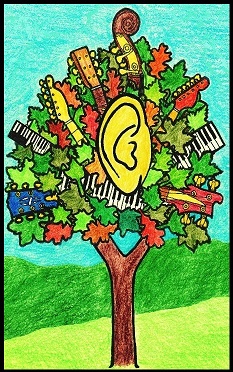 Here in Houston, schools have had to close several times in years past due to floods, including hurricanes Allison, Ike and Harvey. A couple of years ago, area schools had to close for ice storms, which are rare in Houston. But this wasn’t enough for music schools in the area to include online lessons as part of their business model.
Here in Houston, schools have had to close several times in years past due to floods, including hurricanes Allison, Ike and Harvey. A couple of years ago, area schools had to close for ice storms, which are rare in Houston. But this wasn’t enough for music schools in the area to include online lessons as part of their business model.
Then came the lockdown from corona virus. The school I work for, and practically every other private music school in the country, changed overnight from a brick-and-mortar to an online business. At the school I work for, the transition was pretty straightforward, considering how sudden it was. That was because of the business acumen of the owner. But many other music schools went out of business during the lockdown.
By 2015, thirty percent of college students were enrolled in at least one distance education course. The age of distance education has arrived. It’s the future of education. It fits our telecommuting gig economy.
Apps like Zoom and Skype make it possible to have a one-to-one music lesson on a PC, tablet or phone. Online lessons are a way for brick-and-mortar schools to better serve adults, advanced students, and people in rural areas.
Almost all music schools schedule appointments at the same time every week. Many people are forced to quit lessons because they discover that their schedules won’t allow them to keep weekly appointments. Online teachers are often more flexible. Many online teachers let you book lessons individually, without any contract or future obligation. You don’t have to keep a credit card on file. The ability to pay for just one lesson at a time allows busy people to drop in or out as it suits them.
An important side-benefit of not having to travel is that students remember their lessons better because they can practice right after their lessons. You can remember more when your memory isn’t interrupted by the drive home.
Video-conferencing is a way for brick and mortar schools to increase the utilization of their rented space. Even prior to the outbreak, parents were starting to ask for video–conference lessons from music schools. Having clients across time zones means you can open earlier and close later. At many schools, it started with one client who moved out of town, and wanted to continue lessons online.
Word gets around, more people move away, and within a few years, it’s ten or twenty percent of the business. One problem with video-conferencing is there’s usually a time-delay which makes it impossible for the student and teacher to play together in real time. Exchanging videos can help to solve the problem of playing together over the web. When students play along with prepared tracks or videos, the teacher can see how the student interacts with the music.
Distance education works better with young adults and older people than with young kids. It’s a viable solution for busy executives who are looking for a way to squeeze in a lesson, or make constructive use of downtime on their job.
Distance education allows you to decide for yourself how much real-time, face-to-face instruction you need. Many people today are learning to play using a combination of video-conference lessons and lesson videos, including those on YouTube.
Many distance education programs are just digitized versions of the same outdated, boring Default Programs as mainstream private music schools. If you’re updating your lesson technology, it’s a good time to also update your lesson approach.
Many people today are learning music through subscription websites. It’s possible to learn to play at a professional level just from watching videos online. But the fact is most people can’t teach themselves from videos.
Some teachers discourage their students from watching lesson videos online. On the other hand, I encourage my students to learn anything they can from online videos. I’m not competing with YouTube. Just the opposite. YouTube delivers a steady stream of engaged, curious students who already know all of the boring introductory stuff, so we can jump right into playing real music.
If you’re thinking about subscribing to a lesson website, remember that bigger isn’t necessarily better. A website with 4000 video lessons sounds like a bargain. But there are three things you should ask yourself. (1) How good are their lessons? (2) How many lessons do you think it will take for you to reach your musical goal? (3) For that matter, how many lessons do you plan to take in your life?
If you like having the choice of 1000 or 5000 different lessons, that’s fine. But ask yourself, how many lessons are you going to need, and how long is it going to take before you can say you’re “ready,” whatever that means to you.
© 2019, 2020 Greg Varhaug